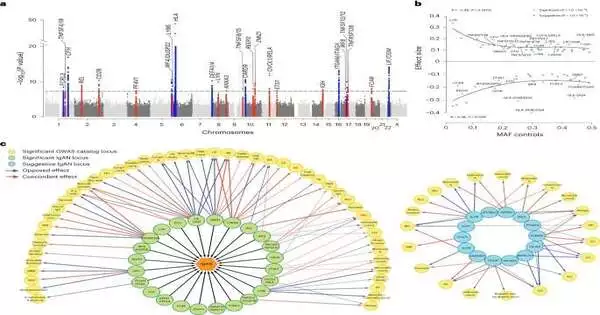A new study led by Columbia University researchers found that a common kidney disease probably has a cause that isn’t in the kidney. An earlier hypothesis that the immune system plays a significant role in driving the disease is supported by the findings of the study, which identified 16 new genomic regions associated with immunoglobulin A (IgA) nephropathy and suggests new methods for identifying the condition and treating it.
Because the underlying cause of IgA nephropathy is not well understood, no targeted treatments have been approved to treat the condition.
It is necessary to study thousands of patients in order to identify genes linked to a disease so that new drugs can be developed and provide clues to the disease’s origin. Those numbers are difficult to achieve for IgA nephropathy.
“We also created a genetic risk profile that may help identify patients who are most likely to progress to kidney failure.”
Ali Gharavi, MD, the Jay Meltzer, MD, Professor of Nephrology and Hypertension and co-leader of the study.
Although IgA nephropathy is more common than other immune-mediated kidney diseases, it is difficult to diagnose and difficult to locate confirmed patients. According to Krzysztof Kiryluk, MD, lead author of the study and associate professor of medicine at Columbia University Vagelos College of Physicians and Surgeons, “The diagnosis requires a kidney biopsy, which is an invasive procedure with a lot of risks, so the diagnosis is frequently missed.”
Using a vast network of collaborators that eventually included nephrologists, geneticists, and other scientists scattered across four continents, Kiryluk and his colleagues solved the numbers problem. Blood samples were sent to Kiryluk’s Columbia team for DNA extraction and analysis by each collaborator, who then recruited local biopsied patients.
The researchers compared DNA from people who did not have IgA nephropathy to DNA from people who did have the disease using samples from nearly 40,000 subjects. The largest study ever conducted on the genetics of IgA nephropathy took ten years to complete and involved nearly 200 scientists and clinicians from over 100 institutions.
The fact that many of the new genes found in the study are involved in the production of IgA antibodies supports the idea that the disease is caused by how IgA levels are controlled.
According to Kiryluk, “that’s a very important finding because IgA nephropathy is considered to be a kidney disease, but it appears to have its source outside the kidney.” IgA nephropathy is a type of kidney disease.
According to Ali Gharavi, MD, co-leader of the study, and Jay Meltzer, MD, Professor of Nephrology and Hypertension, “We also developed a genetic risk profile that may help identify patients at highest risk of progression to kidney failure.”
Additionally, the researchers discovered proteins produced by the newly discovered genes that appear to be the best drug development targets. Additionally, they discovered two medications that have previously been investigated for use in the treatment of other conditions and may be useful in the treatment of IgA nephropathy.
“We hope that pharmaceutical companies will start developing new therapies based on our findings,” Kiryluk states. “A recent analysis found that drug targets backed by genetic studies are more likely to succeed.”
The paper has been accepted for publication in Nature Genetics.
More information: Krzysztof Kiryluk et al, Genome-wide association analyses define pathogenic signaling pathways and prioritize drug targets for IgA nephropathy, Nature Genetics (2023). DOI: 10.1038/s41588-023-01422-x





